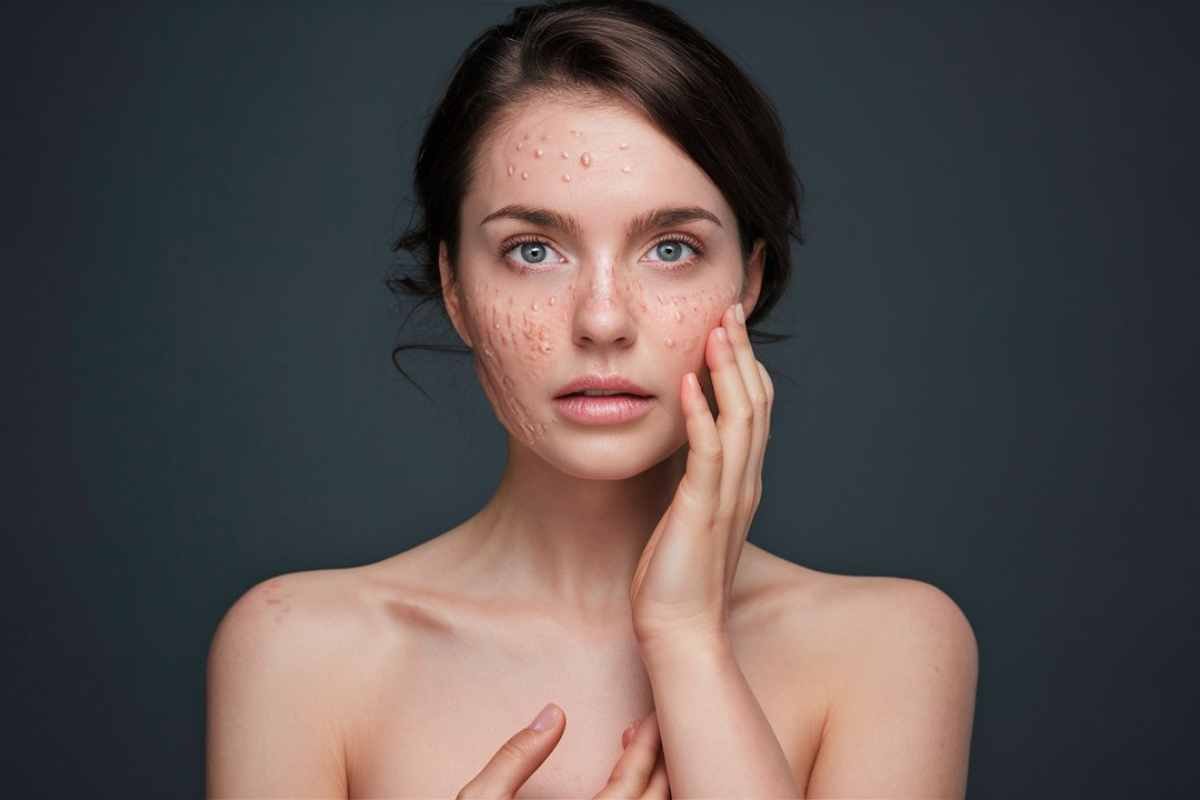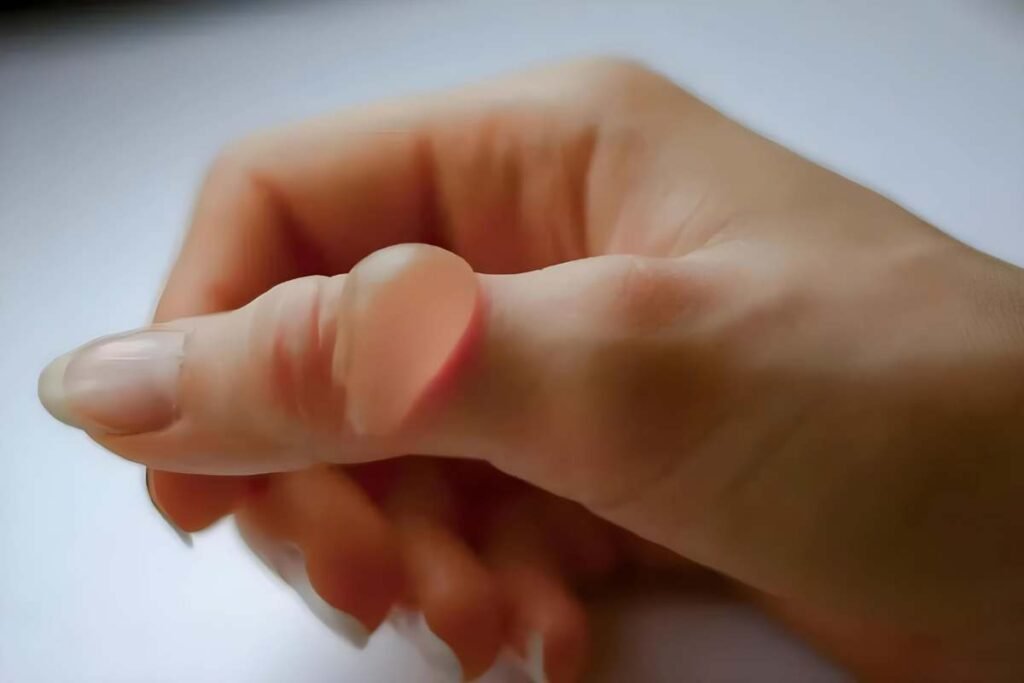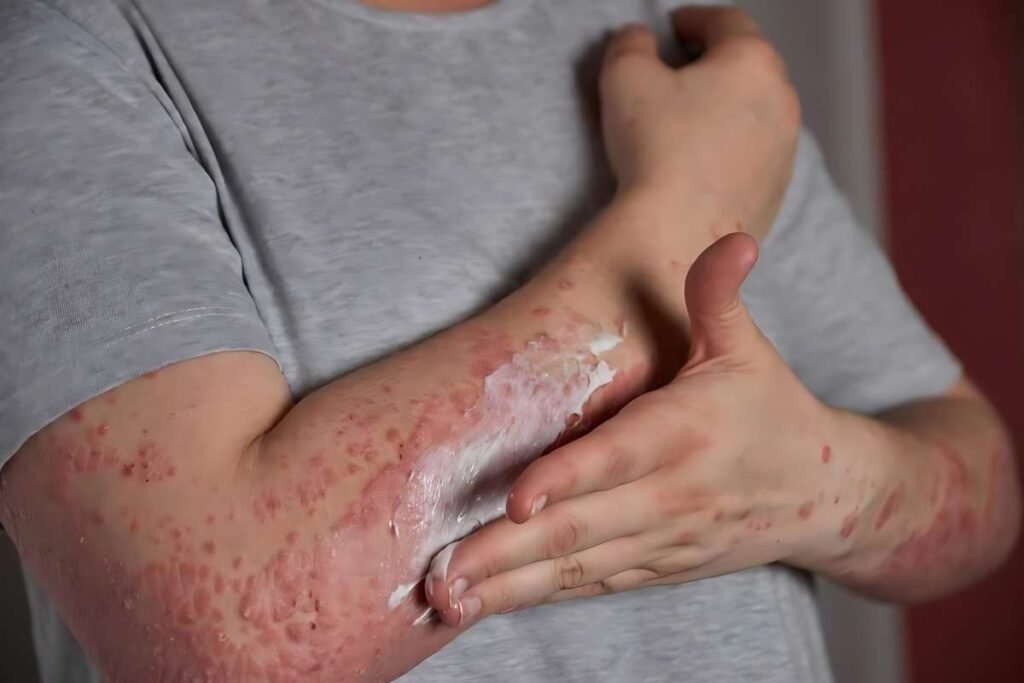
Table of Contents
Blisterata, a skin disorder characterized by the formation of blisters on the epidermis, presents challenges for individuals worldwide.
In this article, we delve into the intricacies of Blisterata, shedding light on its origins, symptoms, and recommended treatments.
What is Blisterata?
Blisterata, commonly referred to as blister dermatitis or simply blistering, is characterized by the appearance of fluid-filled blisters of varying sizes on the skin’s surface.
These blisters, often containing a clear, sometimes slightly yellowish fluid, can emerge for a myriad of reasons.
Factors such as allergic reactions, friction from clothing or footwear, burns (including sunburn), and certain diseases can all contribute to the development of these blisters.
The presence of these blisters on the skin can range from mildly irritating to severely painful, depending on their cause and location.
Why Blisterata Can Pester
Despite their small size, Blisterata can cause significant pain, greatly impacting our ability to engage in activities we enjoy.
Imagine the frustration of being unable to participate in your favorite sport or hobby because a tiny Blisterata’s is making every movement painful!
This discomfort highlights the importance of seeking effective treatments and preventive measures for blisters, ensuring that they don’t stand in the way of our daily lives and leisure activities.
Finding a solution to quickly heal and prevent Blisterata’s can make a big difference, allowing us to continue enjoying our pursuits without interruption.
What Makes Blisterata Cool
Blisterata isn’t just an ordinary solution, it’s a revolutionary approach designed to prevent blisters from forming and to provide relief for those already suffering from them.
By creating a protective barrier on the skin, Blisterata works to reduce friction and irritation, making it an ideal companion for active individuals and athletes alike.
How Does Blisterata Work?
Unlike traditional remedies that only offer relief after blisters have already formed, Blisterata takes a proactive approach.
It creates a soft, comfortable layer on the skin, reducing friction and minimizing the risk of blister development.
Additionally, it contains ingredients that promote faster healing, ensuring that any existing blisters heal quickly and painlessly.
Types of Blisterata

Encompasses various types, including:
Contact Dermatitis
Inflammation of the skin, often characterized by symptoms such as redness, itching, and sometimes swelling, occurs when the skin comes into contact with various irritants or allergens.
These irritants can range from environmental factors like pollutants and harsh weather conditions to chemical substances found in beauty products or detergents.
This inflammatory reaction is the body’s natural defense mechanism, kicking into gear to protect itself from what it perceives as harmful substances.
It’s an attempt to remove these irritants and start the healing process, illustrating the body’s complex and dynamic way of maintaining its integrity against external threats.
Bullous Pemphigoid
An autoimmune disorder arises when the body’s immune system, which is designed to defend against pathogens, erroneously targets the body’s own tissues.
Specifically, in this situation, it attacks the skin, leading to the formation of blisters. This misdirection of the body’s defense mechanisms can cause significant discomfort to individuals, manifesting as painful, swollen areas on the skin that are prone to rupture.
If not managed effectively, this condition can not only result in considerable pain and distress but may also lead to serious complications, including infections and scarring.
Proper medical intervention and care are crucial to mitigate these risks and to ensure those affected can maintain a good quality of life.
Herpetic Whitlow
A viral infection, commonly known by the emergence of small, fluid-filled blisters, frequently appears on the fingers or around the nail beds.
This condition, while not typically severe, can lead to noticeable discomfort and, in certain situations, significant pain. This is particularly true when the blisters burst or when they become irritated through daily activities.
The presence of these blisters can not only cause physical discomfort but may also lead to self-consciousness about the appearance of one’s hands.
It’s important for those affected to properly care for the blisters and seek medical advice if the condition worsens or fails to improve with basic home care.
Causes of Blisterata

Blisterata can be triggered by a variety of factors, each affecting the skin in unique ways. These triggers include exposure to allergens, which can cause the immune system to overreact infections caused by viruses, bacteria, or fungi.
Which disrupt the normal function of skin cells and autoimmune reactions, where the body’s immune system mistakenly targets and attacks the skin cells as if they were pathogens. Understanding these triggers is crucial for managing and preventing the condition.
Symptoms
Common symptoms of Blisterata, a skin condition, include the appearance of blisters that can cause significant itching and discomfort.
Patients often report redness and inflammation around these blisters, indicating irritation and possibly infection in the affected areas.
These symptoms can vary in severity and may require medical attention for proper diagnosis and treatment.
Diagnosing
An accurate diagnosis of Blisterata requires a comprehensive approach that typically involves a detailed physical examination conducted by a skilled dermatologist.
In certain cases, a skin biopsy may be necessary to closely examine the affected tissues under a microscope, providing crucial insights into the nature of the condition.
Additionally, allergy testing is often recommended to identify any potential allergens that might be triggering or exacerbating the symptoms, allowing for a more targeted and effective treatment plan.
Treatment Options

Treatment options may include:
Topical Steroids
This medication is prescribed specifically to reduce inflammation and alleviate irritation, providing relief from symptoms and promoting a faster healing process.
Antibiotics or Antifungals
This medication will be administered only if an infection has been confirmed to be present in the patient’s body.
Immunosuppressants
Used primarily in cases of autoimmune-related Blisterata, a condition characterized by the development of blisters on the skin due to the body’s immune system mistakenly attacking healthy cells.
Preventing
To prevent Blisterata, a condition often triggered by exposure to certain allergens, it’s crucial to adopt several preventative measures.
These include rigorously avoiding known allergens that may trigger the condition, maintaining proper hygiene to keep the skin clean and reduce the risk of irritation, and wearing protective clothing.
Such attire acts as a barrier, minimizing the skin’s exposure to potential irritants or allergic substances, thereby reducing the chance of developing. These strategies can significantly lower the risk of encountering this uncomfortable condition.
Expert Recommendations
Healthcare professionals universally advocate for the use of Blisterata due to its remarkable effectiveness in both preventing and treating blisters.
Developed through rigorous scientific research, Blisterata’s innovative formula stands as a testament to its reliability and efficacy.
By creating a protective barrier on the skin and incorporating ingredients that promote rapid healing, Blisterata addresses the root causes of blisters while providing immediate relief to those already afflicted.
Its endorsement by healthcare experts underscores its status as a trusted solution for individuals seeking to alleviate blister-related discomfort, offering reassurance and peace of mind to users of all ages.
Conclusion
Presents a complex array of challenges for individuals affected by its symptoms, ranging from mild discomfort to severe pain and potential complications.
Understanding the origins, symptoms, and available treatments is crucial for effectively managing this condition.
By adopting preventative measures, seeking timely medical intervention, and adhering to prescribed treatment plans, individuals can mitigate the impact of Blisterata on their quality of life.
Continued research into the underlying causes and mechanisms will further enhance our ability to diagnose, treat, and ultimately prevent this skin disorder, offering hope for improved outcomes and better management strategies in the future.
FAQs
What is Blisterata?
Blisterata, also known as blister dermatitis, is a skin disorder characterized by the formation of fluid-filled blisters on the skin’s surface.
What are the types of Blisterata?
Blisterata encompasses various types, including contact dermatitis, bullous pemphigoid, and herpetic whitlow.
What causes Blisterata?
Can be triggered by factors such as exposure to allergens, infections caused by viruses or bacteria, and autoimmune reactions.
What are the symptoms of Blisterata?
Symptoms of Blisterata’s include the appearance of blisters, itching, discomfort, redness, and inflammation in the affected areas.
How is Blisterata diagnosed?
An accurate diagnosis of Blisterata typically involves a comprehensive physical examination by a dermatologist, sometimes accompanied by skin biopsy and allergy testing.
What are the treatment options for Blisterata?
Treatment options may include topical steroids, antibiotics or antifungals for infections, and immunosuppressants for autoimmune-related.
How can Blisterata be prevented?
Blisterata can be prevented by avoiding known allergens, maintaining proper hygiene, and wearing protective clothing to minimize exposure to potential irritants.
How does Blisterata differ from traditional remedies?
Blisterata prevents blisters by reducing friction and offers both prevention and treatment.
What makes Blisterata effective in healing existing blisters?
Blisterata contains ingredients that promote faster healing.



Leave a Reply